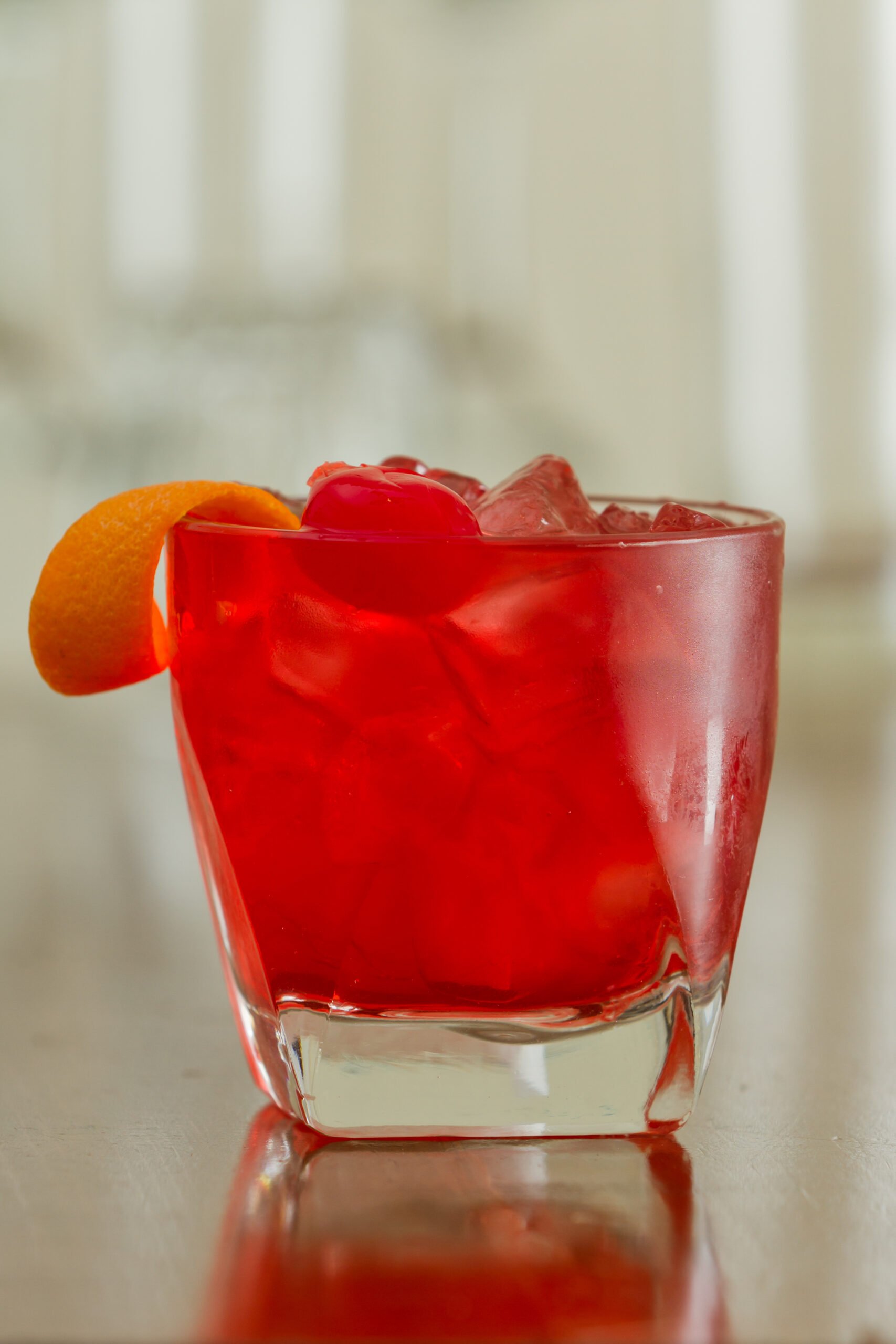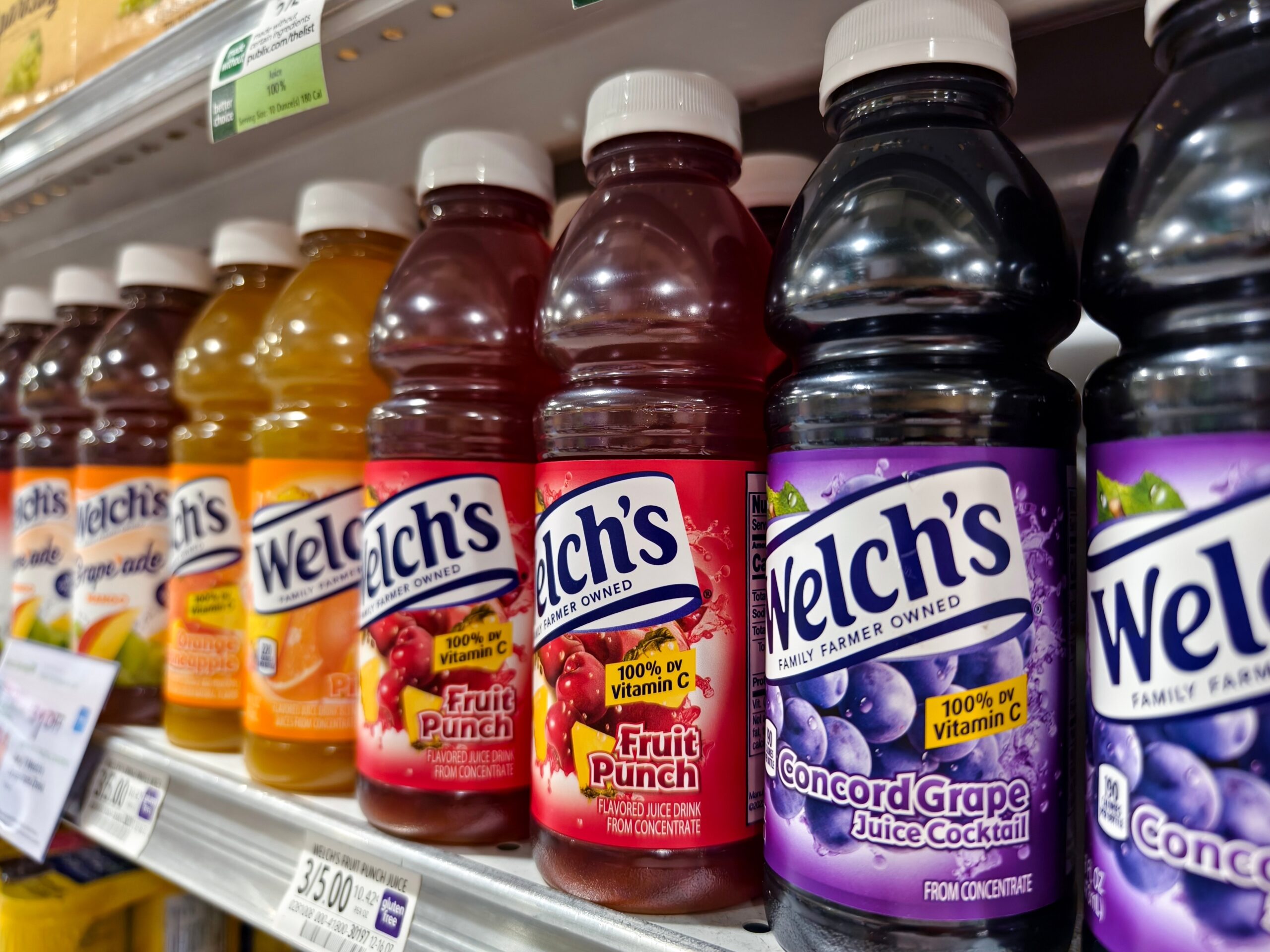Drinks That Start With W (Listed with Pictures, Facts)

W is for Whiskey and Warm milk, both of which are wonderful! Though too much whiskey might leave you weary and wanting a rest. Check out this list of 25 drinks (plus one bonus drink!) beginning with the letter W to find one that sounds worthwhile!
Your handy alphabetized list for quick reference:

The Waldorf Cocktail, a signature drink from the Waldorf-Astoria Bar in the early 1900s, is a timeless classic that’s still a fantastic choice today. It’s essentially a rye whiskey Manhattan with a touch of absinthe. The anise from the absinthe creates an interesting contrast to the sweetness of the whiskey, making it a truly distinctive drink. Originally, the recipe called for equal parts whiskey, vermouth, and absinthe. However, this heavy use of absinthe is likely too strong for modern tastes, so the ratios have been adjusted over time.

The Walk Me Down cocktail, sometimes called “Walk Me Down (Sweet Jesus),” is a strong and colorful drink that’s perfect for those who enjoy bold, flavorful cocktails. While the origin of its name is unclear, it’s often linked to the song “Sweet Jesus” by The Velvet Underground. This cocktail combines rum, tequila, vodka, gin, and blue curaçao, balanced out by the tangy sweetness of lemon juice and a sweet and sour mix. Finished with a splash of 7-Up, it’s both refreshing and potent. To make it, fill a highball glass with ice and add 0.5 oz each of rum, tequila, vodka, gin, and blue curaçao. Then mix in 1 oz of sweet and sour mix and 0.5 oz of lemon juice. Top it off with 1 oz of 7-Up, stir gently, and garnish with a slice of lemon. Enjoy responsibly!

The Wallaby Darned from Outback Steakhouse is a refreshing peachy frozen cocktail that’s perfect for recreating a steakhouse vibe at home. You don’t need any secret mixers or fancy equipment to whip up this drink—it’s simple. Inspired by a classic Peach Bellini, the Wallaby Darned is a fruity, frozen favorite that’s great for hot summer days. To make it, blend together 1 cup of frozen peaches, 4 ice cubes, 1 1/4 ounces of peach schnapps, and 1 ounce of vodka until smooth. Add 2 ounces of Prosecco, pulse the blender a couple of times, and pour it into a glass.

Walnut liqueur, also known as nocino, noix, or Nüsse, is a sweet spirit with a rich, nutty flavor and a touch of bitterness. Made from green walnuts, it can be crafted using different base alcohols like vodka, brandy, or grappa. The process involves steeping the walnuts in alcohol with sugar and spices, resulting in a variety of styles ranging from pure to blended. This liqueur is enjoyed neat, over ice, or as part of cocktails like a Walnut Old Fashioned. The aroma is earthy and warm, with a distinct walnut scent complemented by subtle spice notes.

Warsteiner beer is brewed in the scenic Arnsberg Forest Nature Park, near Warstein in North Rhine-Westphalia, Germany. It is Germany’s biggest privately owned brewery. The brewery follows the Bavarian Purity Law of 1516, ensuring quality in every beer. Warsteiner’s most popular beer, Premium Verum, is a pilsner-style brew with 4.8% alcohol and is exported to over 60 countries. Another favorite is Premium Dunkel, a dark, traditional beer also with 4.8% alcohol. For those seeking a non-alcoholic option, Warsteiner Premium Fresh is brewed like the Verum but with the alcohol carefully removed, containing just 80 calories per 12 oz bottle. Lastly, the König Ludwig Weissbier, also known as Royal Bavarian Hefeweizen, is a golden wheat beer made with natural yeast and Bavarian ingredients, featuring a 5.5% alcohol content.

The Washington Apple is a crisp and tart cocktail that’s easy to make and even easier to enjoy. It’s said the drink was invented in the late 1980s after a bad bug wiped out many of Washington state’s apple orchards. Christof Guycoogan, a creative distiller, turned those ruined apples into apple liqueur, which he mixed with his favorite combo of Canadian whisky and cranberry juice. The blend of whisky, apple liqueur, and cranberry juice quickly became a hit and remains a popular choice at bars today. While the apple flavor usually comes from sour-apple schnapps, you can elevate the cocktail by using a high-quality apple liqueur or Calvados, a French apple brandy. This swap brings a rich apple taste without as much tartness, letting the cranberry handle that part, and avoids artificial flavors altogether.

The Water Moccasin shot is a hit at college parties and young people bars, known for its strong, “bite.” Made with any kind of whiskey, peach flavored schnapps, triple sec, lime, and sugar or simple syrup, it’s simple, yet tasty. You don’t need an expensive whiskey for this, something like Crown Royal or another smooth Canadian whisky works perfectly since it blends well without overpowering the other flavors. Some variations add pineapple or orange juice, but those really change the taste, so we recommend sticking to the classic recipe. It’s not the fanciest drink, but it’s a crowd-pleaser!
My drink of choice in my very early 20s, a West Coast Cooler is a wine-based drink with a crisp, refreshing taste, balanced by exotic fruit flavors and a sparkling finish, making it a great alternative to beer or cider. With an alcohol content of 3.5%, it is owned and produced by Irish Distillers, a subsidiary of Pernod Ricard. First launched in Dublin on August 21, 1984, the drink was given a fresh new image in 2004, targeting young to middle-aged women. Over the years, West Coast Cooler has been promoted through events like sponsoring the Belfast premiere of “Confessions of a Shopaholic” and the West Coast Cooler FASHIONWEEK.

The whiskey sour is a classic cocktail made with whiskey, lemon juice, and sugar, usually garnished with a cherry or a lemon wedge. Its flavor is a balance of sour, bitter, and sweet, and it can be served as a shot or a mixed drink, shaken and either served straight up or over ice. Some variations include an egg white, known as a Boston sour, or Scotch whiskey, called a Scotch sour. Adding a float of red wine creates a New York sour. The drink’s history traces back to the 18th century when English sailors used citrus to prevent scurvy on long voyages. One origin story credits English Vice Admiral Edward Vernon, who mixed rum with citrus to keep his crew healthy; this early concoction later evolved into the whiskey sour. Another tale claims English sailor Elliott Stubb invented it in 1872 in Iquique, Chile, by combining whisky, sugar, and the region’s acidic Limón de Pica to create the cocktail we know today.

The White Russian is a classic vodka cocktail loved for its creamy texture and smooth taste. It’s essentially a Black Russian with an added splash of cream, giving it its pale color and rich feel. Both drinks were created in 1949 by Belgian bartender Gustave Tops at the Hotel Metropole in Brussels. He reportedly made them to honor Perle Mesta, the U.S. ambassador to Luxembourg at the time. Despite being crafted by a Belgian, the drinks were named “Russian” because vodka, their main ingredient, was strongly associated with the Soviet Union, the world’s top vodka producer at the time. Similarly, the Moscow Mule nods to Russia in its name but was actually invented in New York. The White Russian gained some recognition in the 1960s, even appearing in a California newspaper, but its popularity didn’t really take off until 1998. That’s when it became the signature drink of “The Dude,” the laid-back main character in the cult classic movie The Big Lebowski.

Wild Turkey is a Kentucky straight bourbon whiskey made at the Wild Turkey Distillery in Lawrenceburg, Kentucky, owned by the Campari Group. The distillery is part of both the American Whiskey Trail and the Kentucky Bourbon Trail and offers tours for visitors. The name “Wild Turkey” originated in 1940 when a fello named Thomas McCarthy brought some whiskey samples on a turkey hunting trip. His friends loved it so much they kept asking for “that wild turkey bourbon”. Crafted by Kentucky Bourbon Hall of Famer Eddie Russell, Wild Turkey is aged in American White Oak barrels with a No. 4 “alligator” char, the deepest level of barrel charring. With flavors of sweet vanilla, pear, and a touch of spice, it finishes full and rich, whether enjoyed straight or in a bourbon cocktail.

Wine is an alcoholic beverage made by fermenting fruit, most commonly grapes. During fermentation, yeast breaks down the sugar in the fruit into alcohol, carbon dioxide, and heat. While the term “wine” typically refers to grape wine, it can also be made from other fruits like cherries, plums, pomegranates, blueberries, currants, and elderberries. The type of grapes, the yeast used, and factors like the growing environment (known as terroir) and production process all influence the final style and flavor of the wine. Over time, many countries have established rules to regulate aspects like where the grapes are grown, which varieties can be used, and how the wine is made to ensure quality and consistency. Wine-making is an ancient tradition, with evidence of its existence dating back to 6000 BCE in what is now Georgia.

Surprise! Walnuts aren’t actually nuts, they’re the seeds of the walnut stone fruit, just like almonds and cashews. And like other seeds, they’re loaded with healthy fats that make for rich, creamy milk. Walnut milk is a great dairy-free alternative that’s starting to gain attention over its almond and cashew counterparts thanks to its unique flavor and nutritional benefits. So, how is walnut milk made? It’s simpler than you’d think. First, the walnuts are soaked to soften them and help them absorb water. Then, they’re blended with fresh water to create a liquid mixture. Finally, the mixture is strained through a nut milk bag to separate the pulp, leaving you with smooth, velvety walnut milk ready to enjoy.

Apple cider is a classic fall favorite, often enjoyed at farmers’ markets, pumpkin patches, and during the holiday season when it’s simmering on the stove. Made from fresh apples, it’s the unfiltered version of apple juice, which gives it a cloudy, golden color similar to how a peeled apple turns when it oxidizes. While some apple cider is pasteurized for safety, there’s no USDA requirement for it to be pasteurized, unlike other beverages. Whether you prefer it served cold from the fridge, over ice, or warmed with cinnamon sticks and fall spices, apple cider is a versatile drink perfect for the cooler months.

Warm milk, heated above room temperature, is often used as a sleep aid, though its effectiveness is debated. Some research suggests that drinking warm milk before bed might help improve sleep due to compounds like melatonin and tryptophan found in milk. Additionally, the calming routine of sipping on a warm drink can feel relaxing and may make it easier to fall asleep. Most studies on milk and sleep focus specifically on warm milk, so it’s unclear if cold milk offers the same benefits. I like to make it by heating a cup gently in a pot on the stovetop, with a stick of cinnamon in there for some extra flavor and blood sugar regulation.

Water is an essential drink that everyone needs to stay hydrated and healthy. Whether you’re recharging after a workout or just going about your day, water plays a key role in keeping your body refreshed. From tap to mineral to sparkling, different types of water offer unique tastes and benefits, though some may be linked to potential health risks. While there’s no universal rule for how much water to drink daily, experts often suggest around 11.5 cups for women and 15.5 cups for men. However, your personal needs can vary depending on factors like age, weight, activity level, and climate. As for the question “does water have a flavor?” yes, it does! Water has a neutral flavor, but this can still vary depending on the source and filtration process. Some may prefer tap water over bottled water due to the added minerals for taste, while others may opt for purified or filtered water for a cleaner taste.

Water kefir is a fizzy, flavorful drink known for its impressive health benefits, including boosting immunity, improving gut health, and even slowing the growth of cancer cells. Made by fermenting sugar water with water kefir grains—a culture of bacteria and yeast—this probiotic-rich beverage is a great alternative to dairy-based kefir. It’s a perfect choice for those avoiding dairy due to health reasons, dietary restrictions, or a vegan lifestyle. Originating in the late 1800s, water kefir is easy to make by letting the mixture ferment for 24–48 hours, creating a delicious drink packed with beneficial bacteria. With its refreshing taste and health-boosting properties, water kefir is a fantastic addition to a balanced, nutritious diet.

Watermelon agua fresca is a sweet and refreshing drink popular in Mexico, perfect for cooling off on a hot summer day. Made with fresh watermelon, lime, and mint, it’s both fruity and delicious. To prepare, blend 4 cups of cubed, seeded watermelon with ½ cup of water until smooth, then sweeten with sugar to taste. Cut 4 lime slices in half and place a half-slice and 3 mint leaves into each of 8 glasses. Use a muddler to gently crush the lime and mint to release their flavors, then fill each glass with about 1 cup of ice. Pour the watermelon mixture over the ice, stir, and enjoy this simple, refreshing drink!

On a hot summer day, nothing hits the spot like a cold glass of homemade watermelon juice. Add a splash of lime and a sprig of mint, and you’ve got a sweet, refreshing drink that’s perfect for cooling off. If plain water feels boring, watermelon juice is a tasty, hydrating alternative thanks to its high water content. Plus, it’s packed with nutrients like vitamin A, vitamin C, magnesium, and potassium, making it as healthy as it is delicious. For a fun twist, you can even spike it with a bit of alcohol for an adult-friendly version.

Welch Foods Inc., better known as Welch’s, is an American company based in Concord, Massachusetts, and has been owned by the National Grape Cooperative Association, a group of grape growers, since 1956. The company is famous for its grape juices made from Concord grapes. Welch’s also produces a variety of other products, including organic grape juice. The origin of Welch’s grape juice dates back to 1869, when Thomas Bramwell Welch, a British-American physician and dentist, developed a method of pasteurizing grape juice to prevent fermentation and the tranition into alcohol. As a member of the Wesleyan Methodist Connexion, which opposed alcohol, Welch used the unfermented grape juice to replace wine for Holy Communion. In 1893, he and his son Charles E. Welch incorporated the Welch’s Grape Juice Company in Westfield, New York, and rebranded their product as “Welch’s Grape Juice,” which gained popularity at international exhibitions.

White tea refers to a variety of teas made from the young or minimally processed leaves of the Camellia sinensis plant, but there isn’t a universally agreed-upon definition. Some sources describe white tea as simply dried leaves with no extra processing, making it close to the tea plant’s natural state. Others define it as tea made from buds and young leaves picked just before the buds fully open, then allowed to wither and dry in the sun. While definitions vary, most agree that white tea is not rolled or oxidized, giving it a lighter flavor compared to green or black teas. White tea also tends to have less caffeine, typically ranging from 6 to 55 mg per cup, though the exact amount depends on the type of tea, brewing method, and brand. In comparison, green tea has about 30 mg of caffeine per cup, while black tea contains around 50 mg.

The rivalry between Pepsi and Coca-Cola is as fierce as ever, with both brands constantly battling it out with new flavors, ads, and bold moves. When Coke discontinued its Cherry Vanilla soda in 2024, Pepsi saw an opportunity. Now, Pepsi is kicking off the year with some friendly competition by launching a new Wild Cherry & Cream flavor on January 20. This new drink blends the tangy, juicy taste of Wild Cherry Pepsi with a smooth, creamy twist, creating a sweet and indulgent soda that feels like a mix of Pepsi Wild Cherry and Pepsi Cream Soda. Fans of cherry-flavored sodas will be happy to know this new flavor will be available in both full and zero-sugar versions. And it’s not just a limited-time release. Pepsi is making Wild Cherry & Cream a permanent addition to its lineup, giving soda lovers a new favorite to sip on.

Wintermelon tea is a popular and refreshing drink made from the winter melon fruit, commonly enjoyed in many Asian countries. It’s usually served cold or over ice, making it a perfect choice for warmer weather. This beverage can be brewed as a simple tea or turned into milk tea, with flavors ranging from mild to more pronounced, depending on how it’s prepared. You can make it using fresh or dried winter melon and sweeten it with sugar or honey for added flavor. Loved especially in Taiwan, wintermelon tea is not only tasty but also packed with health benefits, including vitamin C to boost immunity, antioxidants, and essential minerals like magnesium, phosphorus, and calcium. In Chinese medicine, winter melon is known for its cooling properties, making this tea an ideal drink to help you stay refreshed as temperatures rise.

Wheatgrass shots are a simple and affordable way to boost your wellness routine. Packed with chlorophyll, amino acids, vitamins C, E, and K, as well as antioxidants, wheatgrass offers a variety of nutrients that support overall health and strengthen the immune system. Wheatgrass comes from sprouted wheat grains and grows quickly, usually reaching full length within 5-7 days. While it’s often freeze-dried for supplements, you can easily juice it fresh at home. The taste of wheatgrass can be strong, but it’s easy to follow up with a chaser like orange juice or coconut water.

You’ve probably seen the internet buzzing about whipped coffee, TikTok’s favorite caffeinated drink. It became one of Google’s top trending recipes in 2020, and it’s easy to see why. With its creamy, frothy texture and caffeine kick, this drink looks like something straight out of a coffee shop. Surprisingly, whipped coffee isn’t new, it’s been enjoyed around the world for years. In Korea, it’s called Dalgona coffee; in Greece, it’s known as Frappe; and in India, it goes by Beaten coffee. The good news? You don’t need to be a barista to make it at home. With just four simple ingredients you can whip up this fancy-looking drink in no time. Mix equal parts instant coffee, sugar, and water, then whip it by hand or with a hand blender until it’s fluffy and golden. Spoon it over milk and ice, and there you have it: a delicious, Instagram-worthy treat!
White Hot Chocolate

Warm, sweet, and comforting, white hot chocolate with mini marshmallows is the ultimate treat for a chilly, snowy night. It’s just like classic hot chocolate, but instead of cocoa, you use creamy white chocolate chips for a rich, velvety twist. To make it, heat 2 cups of milk and 1 1/2 cups of half-and-half in a saucepan over medium-low heat. Stir in 3/4 cup of white chocolate chips until they’re melted and smooth, then add 1/2 teaspoon of kosher salt and 1 1/2 teaspoons of vanilla extract. Once everything is blended, pour the mixture into mugs and top with extra white chocolate chips and a generous handful of mini marshmallows. Sip carefully and enjoy this cozy delight!
Yellow foods listed with pictures, facts
Yellow drinks listed with pictures, facts
100 foods that start with the letter A
100 foods that start with the letter B
100 foods that start with the letter C
3-letter foods listed with pictures and facts
4-letter foods listed with pictures and facts
5-letter foods listed with pictures and facts6-letter foods listed with pictures and facts
Links on this page may be affiliate links, for which the site earns a small commission, but the price for you is the same







)


